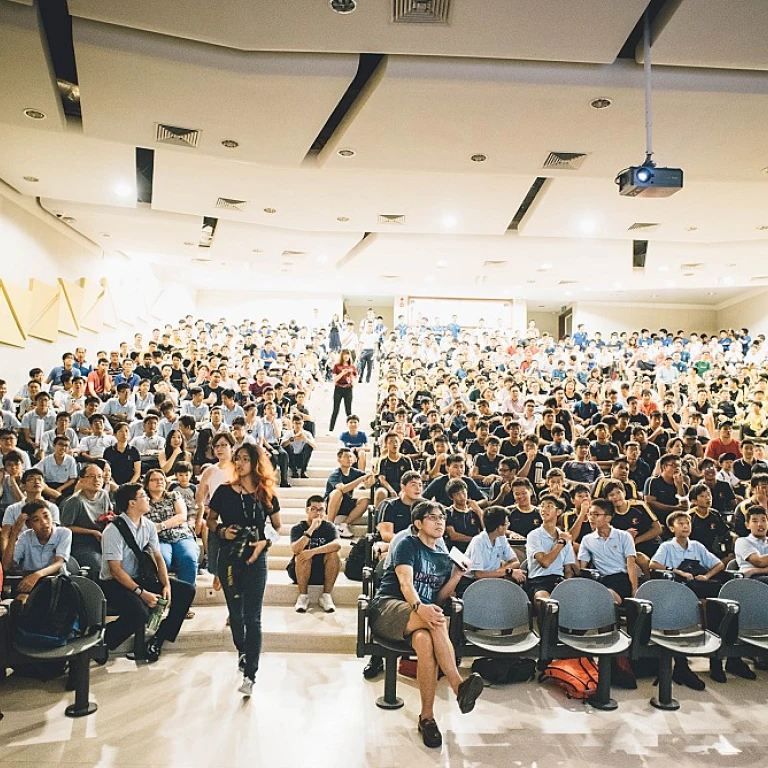
Understanding Employee Retention
Grasping the Fundamentals of Employee Retention
Retaining employees is a crucial aspect for any organization, and this holds true for educational institutions such as El Reno Public Schools. Employee retention can determine the overall quality of education and the consistency of learning experiences for students. A stable workforce ensures continuity and a stronger organizational culture, crucial elements for fostering a successful learning environment in schools. In the context of public schools, including those in Oklahoma City, retention involves keeping teachers, assistant instructors, and even essential roles like bus drivers and support staff satisfied and motivated. When these roles are consistently filled by experienced and dedicated individuals, the school district thrives.Connecting Employee Retention to Opportunity
Career growth opportunities significantly impact an employee’s decision to stay with a school district. Offering opportunities for professional development and pathways to roles like senior instructional coach or moving from a middle school to a high school instructor can keep staff engaged and invested in their careers within the district. Retention strategies also include recognizing achievements and facilitating mentorship roles, such as a baseball coach or a science teacher mentoring junior high instructors, thus creating a supportive network. Moreover, supporting career transitions within the school system can enhance retention. Teachers capable of teaching diverse subjects such as social studies or English across different school levels, including elementary school and pre-kindergarten, may find renewed challenges and growth avenues, thus reducing turnover.Linking to Broader Workforce Insights
Understanding varying job roles and their related challenges can augment retention efforts. For example, knowledge gleaned from industries outside education, like the role of a digital marketing account manager, can offer insights into strategic retention practices applicable within school districts. Implementing tailored strategies to meet the specific needs of school staff forms a pivotal part of long-term retention efforts. Addressing retention is complex, with multiple factors contributing to staff satisfaction or discontent. Ongoing challenges, such as navigating diverse job expectations and achieving work-life balance, can affect retention rates. Future discussions will explore how leadership and evolving workforce trends, like increased demand for substitute teachers or more personalized learning center experiences, influence retention in school districts.Challenges in Retaining School Staff
Addressing the Unique Retention Obstacles Within School Settings
In the diverse landscape of Oklahoma's education sector, retaining qualified school staff presents distinct challenges. This is particularly true for public schools, like those in the El Reno district, where resources and expectations differ from private institutions. The struggles are not isolated to any single role, but span from assistant to science teacher, each position confronting its own set of hurdles. A major obstacle in retaining school staff is the competitive job market in cities around Oklahoma, where neighboring districts and even industries outside education constantly vie for skilled employees. High turnover rates among instructors, such as math or English teachers at middle schools, can be attributed to both the lure of higher salaries elsewhere and the demands of teaching itself. Additionally, the school district operates under constraints that can hinder job satisfaction and longevity. These include:- Budgetary Limitations: Public schools often work with tight budgets, which can limit the ability to offer competitive salaries or yearly raises that match those in nearby urban centers.
- Burnout Factors: The immense workload on high school teachers and instructional coaches can lead to burnout, affecting their motivation and ultimately their decision to stay.
- Role Expectations: Positions like that of a baseball coach or bus driver, though crucial, often lack the professional development paths of other careers, stalling potential advancement.
Effective Retention Strategies
Proven Strategies to Foster Employee Loyalty in Schools
At El Reno Public Schools, implementing effective retention strategies is crucial in ensuring long-term dedication from its staff, from teachers to assistant positions within the elementary, middle, and high school levels. Below are several strategies that have shown to be highly effective in retaining school staff:- Comprehensive Development Programs: Offering continuous professional development opportunities for teachers and instructors enhances their skills and job satisfaction. Programs that focus on educational advancement in subjects like science, math, and social studies are pivotal for an instructional coach or science teacher at a middle school.
- Mentorship and Coaching: Establishing a supportive mentorship system can prove invaluable. Whether it's a new pre-kindergarten teacher, a high school baseball coach, or a junior high bus driver, personalized instructional coaching can facilitate growth and a sense of belonging within the school district.
- Encouragement of Career Progression: Career growth is a vital motivator for public school employees. El Reno Public Schools promotes a pathway for progression, encouraging teachers and assistants to aim for roles like that of a substitute teacher or even an instructional coach.
- Creating a Collaborative Work Environment: Strengthening collaboration among staff at various levels, from the city learning center to the high school English department, nurtures an environment where everyone feels valued and part of the community.
- Recognizing Accomplishments: Regular recognition of achievements, whether in classrooms or sports fields, boosts morale and drives motivation. Be it a middle school math teacher or a city baseball coach, acknowledgment of hard work is crucial.
Career Growth at El Reno Public Schools
Exploring Paths for Professional Development
Career growth opportunities are essential for ensuring long-term employee retention in the El Reno Public Schools. In efforts to cultivate a thriving educational environment, it is crucial for school districts to support their staff by providing opportunities for both personal and professional development. Aspiring educators and support staff, including assistant teachers and instructors at El Reno Public Schools, are encouraged to pursue various career paths within the district. Here are several avenues available to school employees looking to advance their careers:- Professional Development Programs: To keep up with the evolving educational landscape, El Reno Public Schools offers a range of workshops and training sessions throughout the academic year. These initiatives help enhance teaching techniques, introduce new technologies, and prepare educators for administrative roles.
- Mentoring and Coaching: Experienced professionals, such as instructional coaches and seasoned teachers, play a critical role by mentoring new faculty members. Through mentorship programs, teachers can develop their skills in classroom management, curriculum design, and student assessment.
- Advanced Degrees and Certifications: Many educators enhance their credentials by pursuing further studies in their field, such as a Master’s Degree in Education or specialized certifications like those for a science teacher or a school math instructor. Continuing education not only increases a teacher's expertise but also often correlates with higher pay scales.
- Leadership Roles: Teachers seeking career advancement may aspire to positions such as department heads or coordinators, which are often stepping stones to senior administrative roles. These roles leverage their experience in guiding larger teams within the school district.
The Role of Leadership in Retention
The Influence of Leadership on Employee Retention
Leadership plays a pivotal role in retaining staff within the educational sector, particularly in public schools like those in El Reno. Effective leaders not only manage but inspire, creating an environment where teachers, assistants, and other staff members feel valued and motivated. This is crucial in a school district where challenges such as high turnover rates and the need for qualified instructors are prevalent.
In El Reno Public Schools, leadership is not just about administrative duties. It involves fostering a culture of growth and support. Leaders who actively engage with their staff, whether they are elementary school teachers, high school instructors, or bus drivers, contribute significantly to job satisfaction and retention. Here are some ways leadership impacts retention:
- Communication: Open and transparent communication between school leaders and staff helps build trust. When teachers and staff feel heard, they are more likely to stay committed to their roles.
- Professional Development: Offering opportunities for career advancement and professional growth, such as instructional coaching or specialized training for science teachers, can enhance job satisfaction.
- Recognition and Support: Acknowledging the hard work of teachers, from pre-kindergarten educators to junior high social studies instructors, boosts morale and encourages a sense of belonging.
- Work-Life Balance: Understanding the demands on staff, including substitute teachers and baseball coaches, and providing flexibility can reduce burnout and improve retention.
Leadership in schools extends beyond the principal's office. It involves a collective effort from all levels, including instructional coaches and department heads, to create a supportive and engaging environment. As El Reno Public Schools continue to evolve, the role of leadership will remain a cornerstone in retaining dedicated and passionate educators.
Future Trends in School Employment
Emerging Trends in School Employment
As we look towards the future of employment within school districts like El Reno Public Schools, several trends are emerging that could significantly impact employee retention. These trends are shaped by evolving educational needs, technological advancements, and changing workforce expectations.
Technological Integration in Education
Technology continues to play a pivotal role in education, influencing how teachers and instructors engage with students. Schools are increasingly adopting digital tools and platforms, which require educators to be tech-savvy. This shift not only affects teaching methods but also the skills required from educators, including those in elementary, middle, and high schools. As a result, professional development and continuous learning become crucial for retention, ensuring that staff feel competent and confident in their roles.
Focus on Work-Life Balance
Work-life balance is becoming a significant factor in job satisfaction and retention. Schools in Oklahoma, including those in cities like Reno, are recognizing the importance of flexible work arrangements and mental health support. By offering services such as wellness programs and flexible scheduling, schools can enhance job satisfaction among teachers, bus drivers, and other staff, thereby improving retention rates.
Emphasis on Career Development
Career growth opportunities are essential for retaining talented staff. Schools are increasingly focusing on providing clear career paths and professional development opportunities. For instance, roles such as instructional coaches and grade teachers are being supported with training and advancement opportunities. This focus on career development helps in retaining staff who are eager to progress in their careers.
Inclusive and Diverse Work Environments
Creating an inclusive and diverse work environment is another trend gaining traction. Schools are striving to ensure that their staff reflects the diversity of their student populations. This includes hiring practices that promote diversity and inclusion, which can lead to a more supportive and engaging work environment for all employees.
By understanding and adapting to these trends, El Reno Public Schools and similar districts can better position themselves to retain talented educators and staff, ensuring a stable and effective learning environment for students.












